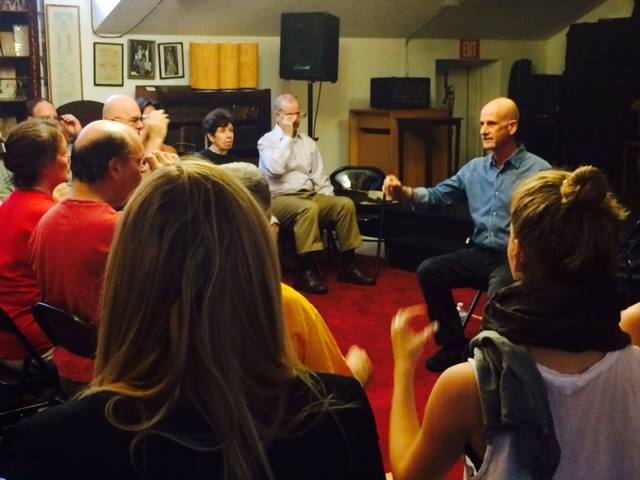 Why Alexander Technique chairwork? How much time during the course of a day do we actually spend getting in and out of a chair? Probably just a few, so why do we Alexander Technique teachers place so much emphasis on this action? Why all this Alexander Technique chairwork?
Why Alexander Technique chairwork? How much time during the course of a day do we actually spend getting in and out of a chair? Probably just a few, so why do we Alexander Technique teachers place so much emphasis on this action? Why all this Alexander Technique chairwork?
Because, depending on our choice of viewpoint, Alexander Technique chairwork covers a lot of territory. If we Alexander Technique teachers choose to regard it as more than just the act of sitting down and standing up, Alexander Technique chairwork includes all the things we do while seated, and while standing. We spend the bulk of our waking hours sitting, standing, or in transition.
Most of us sit at our jobs, perhaps eight hours a day or more, and a good portion of that time is commonly spent at the computer. We get home and, yet again, we sit at the computer or TV. We sit as we eat, read, or watch a movie. We sit as we ride in cars, buses, trains, attend a concert or meeting, or just converse.
Some jobs require standing, and we stand at at bus stops, subway platforms, and when waiting to cross the street. We stand as we brush our hair, brush our teeth, and do kitchen work.
Besides marching bands, most musical instruments are played or practiced either sitting or standing and, because of the computer, we’re all keyboard players. People now take Alexander Technique lessons to relieve the same kinds of self-inflicted injuries with which musicians have long been suffering, because the Alexander Technique helps relieve neck pain, back pain, and repetitive stress injuries.
The pillars of the Alexander Technique- awareness, inhibition, and direction, as well as the countless secondary Alexander Technique directions are dealt with while seated, standing, and during the transition.
For example, here are a few Alexander Technique directions while seated: Let your neck be free so that your head can rotate forward and move up… Let your head lead your spine into length… In opposition to your head and torso moving up, let your sit bones release down into the chair… Breathe slowly and fully… Release your jaw away from your skull… Let your shoulders oppose each other; left one to the left and right one to the right… Let your torso lengthen and widen… Notice any gripping in your legs, and let them flow away from your hip joints… In opposition to your legs releasing from your hip joints, let your torso move up away from your hip joints… Consciously breathe slowly and fully once more…Then, when reaching for the computer keyboard or anything else, let your fingers lead using the minimum amount of effort.
Let an Alexander Technique teacher show you how to sit and stand with minimum stress, and tension, and you’ll be positively affecting a major portion of your life.
Mark Josefsberg-Alexander Technique NYC
(917) 709-4648










Your blog got me writing on the same subject. It’s nice to have the inspiration from you. Thanks.
Thank you, Franis